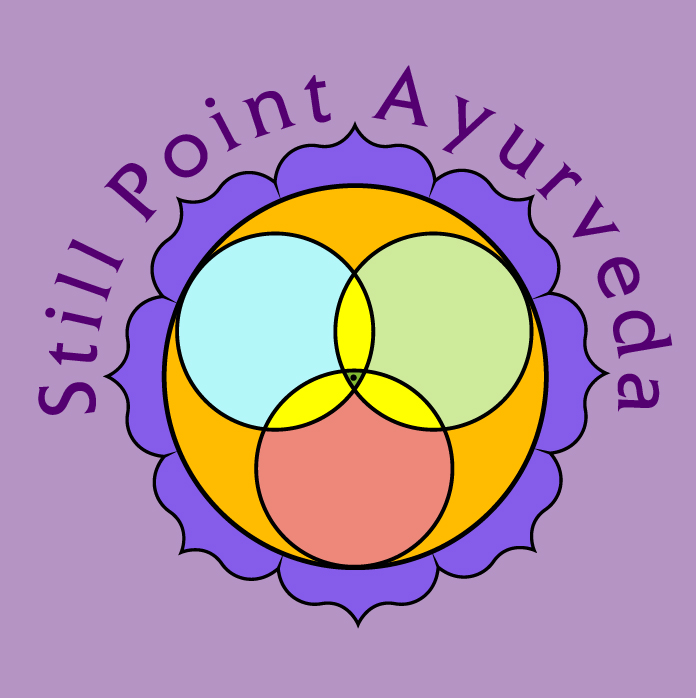DRY BRUSHING
/It’s that time of year when dry brushing can be beneficial for many people, being “Kapha season.” Dry brushing is called Garshana in Ayurveda, and it consists of literally brushing the skin with some tool such as raw wool glove (for Kapha predominant individuals), raw silk glove (more for Vata/Pitta predominant individuals). When these gloves aren’t able to be obtained a washcloth (more for Vata/Pitta), or loofah (more for Kapha) can have a similar effect. Dry brushing is similar to the Ayurvedic treatment called Udvartana but the difference here is that Udvartana uses specific dry powders and that oils are not usually applied after the powder. The concept and process of how this treatment is conducted are similar otherwise.
The purpose of this treatment is to increase circulation, promote skin regeneration, promote sebum (the oil that secretes through the glands subdermal) regulation, increase movement overall through lymphatic stimulation and regulation. It also improves skin tone, can reduce cellulite, supports muscle tone, and is an overall cleansing feeling for the body.
Typically, this type of treatment focuses on the strokes being in the direction against the hair follicles. Additionally, within Ayurvedic protocol of this type of treatment, a light coat of dosa-specific oil is applied. Once this has been done, a shower/bath is essential. This treatment is best done on the morning before 10 am, mainly done after waking up and before bathing. If you tend to be someone that bathes at night, you can try this but make sure it doesn’t cause any sleep disruptions as this can stimulate blood flow and energy. What should also be considered in doing this self-care practice is the state of your diet. A proper diet, along with proper exercise practices, and lifestyle practices will support this type of treatment more efficiently and effectively. If the diet is not proper, this treatment will not have the desired effect(s.)
How to:
1) Choose the appropriate garshana tool for your body type.
2) Standing outside of the shower/bath, begin by rubbing from the toes upward, ending at the head. Note that it is important to perform circular movements around the joints and long circular strokes on the long muscles. Covering the whole body and moving in the direction of the heart.
3) Once the glove, etc. has covered the body, you can enter into the shower or bath and let the warm/hot water hit you.
4) Quickly use an appropriate constitutional (dosa) oil to coat the body lightly.
5) Next, taking either a smear of a soap bar on a washcloth, or a pump of shower liquid soap on a washcloth, cover the whole body in one passing from head to toe with the washcloth. The cloth should not be overly soapy, minimally at best.
6) Rinse off.
7) Pat dry the skin with a towel. You should feel a light coating of oil still on the skin but don’t be alarmed because it will be absorbed enough by the time you put your clothes on, and it is ok to feel it slightly as a natural moisturizer.
Then you’re done.
In cases of Kapha predominant issues, you can do this a couple of times a week. In Pitta/Vata predominant issues that are especially dealing with the skin and/or lymphatic issues, you can do this once a week to every two weeks.
This treatment is focused mostly this time of year, but possibly as needed throughout the year based on your individual suggestions as per Ayurvedic clinician.
Notes: If you are having poor digestion as in sluggish, congested, or slow, what we call Manda Agni in Ayurveda, then this treatment is contraindicated. If you have any skin rashes, then this treatment is contraindicated. If you are pregnant, then certain considerations are needed and you must meet with an Ayurvedic clinician for further clarification and modification. If you have a heart condition, then this may not be the practice for you. If you are above the age of 70, then certain considerations are needed and you must meet with an Ayurvedic clinician for further clarification and modification. This treatment is mainly for individuals between the ages of 12 and 70. If you’ve had any recent biopsies, or have certain immune-compromised issues, then certain considerations are needed and you must meet with an Ayurvedic clinician for further clarification and modification. If you are dealing with any issues such as hyperacidity, gastritis, IBS, then certain considerations are needed and you must meet with an Ayurvedic clinician for further clarification and modification.
Resources:
A YouTube video to help HERE
Where to buy Wool gloves HERE
Where to buy Silk gloves HERE
More on Garshana HERE
UDVARTANA according to Ashtanga Hridayam (under chapter 2 of Sutrasthana and under Dinacarya)
DISCLAIMER: This information is meant for educational purposes only and is not considered medical advice. Any changes in lifestyle should be reviewed with a qualified practitioner and/or primary care physician if you are currently under their care for specific conditions.



